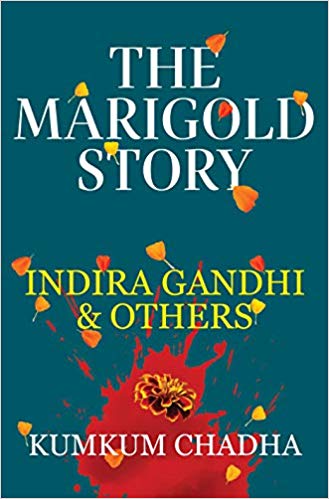‘This book is for a generation that has very few memories of the Seventies’ India.’ This is the opening line of the preface of Kumkum Chadha’s new book The Marigold Story: Indira Gandhi & Others, comprising eleven profiles of personalities largely belonging to the world of politics and stardom. The basic idea is to make the present generation aware of the human side of these larger than life personalities with all their weaknesses and vulnerabilities. Also, it seeks to introduce readers to the everyday struggles of a reporter in the pre-social media world of journalism. Largely based on memory and recalling events, it is more like an organic, observational narration of the author’s own life-world than about actual reportage. The result is a mixed bag as it leaves many questions unanswered. At the same time, it also compels the reader to raise a fundamental issue of the relevance of such a work in today’s times.
What did it mean for a promising young female journalist in the 1970s to get into the head space of popular public persona? This premise has enough appeal and content to be skilfully mined especially for the present generation. Unfortunately, the slapdash treatment of profiles is typified by the randomness of the profiles included and the paucity of any genuinely new insight even in the process of humanizing the popular. The author has had a good personal rapport with all these public figures. However, seldom is the characterization restricted to this period. 1970s merely remain the starting point after which the stories traverse across many decades, coming down to as late as the 2014 General Elections. The novelty of the entire project (of introducing the present generation to 1970s and 1980s style of journalism) is watered down by its haphazard, expansive coverage as opposed to an intensive one focusing on short periods. For instance, the brief mention of typewriters in that period could have acted both as a literal and figurative metaphor for capturing the arduousness of reporting.
For a book that intends to focus on the 1970s, the very first chapter is surprisingly on Abhinav Bindra and his heroics in the 2008 Beijing Olympics. Apart from a few personal conversations with his father, there is precious little to know as it masquerades along the already well-trodden path of popular exemplifications. Similar is the case with chapters on the ‘power couple’ Amitabh and Jaya Bachchan and on Ekta Kapoor and Smriti Irani. The former has paeans of praise for Jaya Bachchan’s political acumen as opposed to the manufactured political correctness of Amitabh. The author’s soft corner for Jaya is perceptible as it takes precedence over an impassioned and unvarnished insight into the heady mixture of politics and stardom. Likewise, the chapter on Ekta Kapoor and Smriti Irani is nothing but an eulogy of legends in the make. Even the bare minimum critique comes in the form of a benign narration. We hardly come across a purposeful interjection in terms of the author’s personal take. This continues with Lalu Prasad Yadav as apart from the already known stories surfacing around his corruption scandals, a page long interview about his shift in dietary habits from rodents and rabbits to vegetarianism is the only ‘original’ nugget of information on offer.

